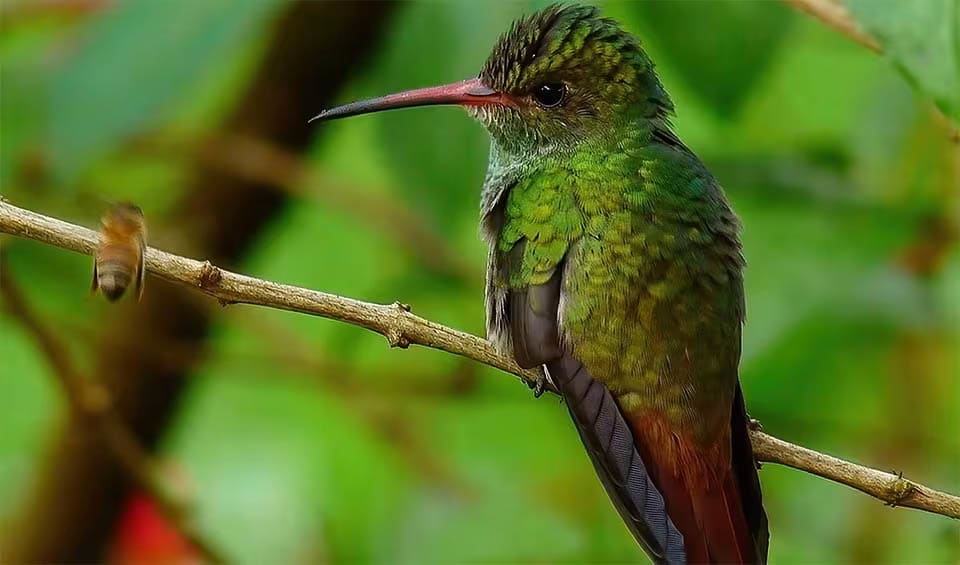Its vibrant plumage and unique behaviors stand out among its avian counterparts. As its name suggests, this hummingbird is characterized by its striking rufous-colored tail and distinctive pink bill adorned with a black tip. Found throughout Mexico, Central America, and northern South America, this species is a common sight in a variety of habitats, including non-forested areas and forest borders.
As nectarivores, Rufous-tailed Hummingbirds play a crucial role in pollination, visiting a wide range of flowering plants to feed on the sweet nectar they provide. Among their favorite nectar sources are the blooms of Lobster-claw, banana, and coffee plants, where they use their specialized long, slender bills to extract the sugary liquid. In addition to nectar, these hummingbirds also supplement their diet with insects, which provide essential protein to support their high metabolic rates.
One of the most fascinating adaptations of the Rufous-tailed Hummingbird is its ability to enter a state of torpor during periods of inactivity, such as the night or colder days. Torpor is a physiological phenomenon characterized by a significant decrease in metabolic rate and body temperature, allowing the bird to conserve energy during periods of low food availability or unfavorable environmental conditions.
During the breeding season, male Rufous-tailed Hummingbirds engage in elaborate courtship displays to attract mates, performing aerial acrobatics and vocalizations to demonstrate their fitness and prowess. Once a mate is chosen, the female takes on the responsibility of nest-building and egg-laying, typically producing two eggs per clutch. The female alone incubates the eggs and cares for the hatchlings, providing them with warmth and nourishment until they are ready to fledge.
Distribution
 Belize
Belize Colombia
Colombia Costa Rica
Costa Rica Ecuador
Ecuador El Salvador
El Salvador Guatemala
Guatemala Honduras
Honduras Mexico
Mexico Nicaragua
Nicaragua Panama
Panama Peru
Peru Venezuela
VenezuelaAnything we've missed?
Help us improve this page by suggesting edits. Glory never dies!
Suggest an editGet to know me
Terrestrial / Aquatic
Altricial / Precocial
Polygamous / Monogamous
Dimorphic (size) / Monomorphic
Active: Diurnal / Nocturnal
Social behavior: Solitary / Pack / Herd
Diet: Carnivore / Herbivore / Omnivore / Piscivorous / Insectivore
Migratory: Yes / No
Domesticated: Yes / No
Dangerous: Yes / No






